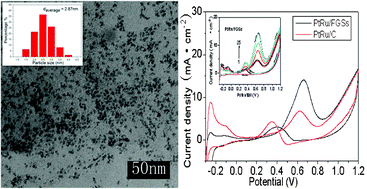Methanol electrocatalytic oxidation on highly dispersed platinum–ruthenium/graphenecatalysts prepared in supercritical carbon dioxide–methanol solution†
Abstract
An effective, simple, low temperature and environmentally benign supercritical fluid (SCF) route is presented for preparing


 Please wait while we load your content...
Please wait while we load your content...